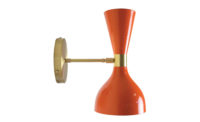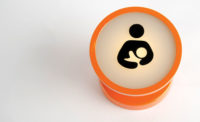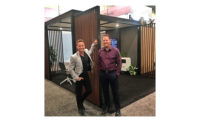Launched last month, the new Sonneman — A Way of Light showroom, in the New York Design Center, is more like a design team work space than a showroom, complete with a project room and kitchen in back, just beyond the product display areas.
During a recent visit, founder Robert Sonneman explained that this arrangement (while not exclusive to showrooms selling lighting) is notable, because it reinforces an industry trend toward designing a project’s lighting scheme simultaneously, or sometimes in the case of many ground-up new structures, before the building is completed.
Lighting design has been happening earlier in the design process. What would you say is the practical explanation behind that?
As an architect myself, I remember the days when lighting was conceived after the walls and ceilings were built. Now, we see architects involving professional lighting designers sooner to avoid having to open up the walls and ceiling planes. It’s almost the same rationale that says you can’t break ground without involving a structural engineer. You don’t want to have to go back and open up the ceiling to do it.
Really? You’d describe the role of today’s lighting designer as being on par with a structural engineer?
Well, with the programming and controls now possible through integrated LED technology, lighting requires knowledge of design, manufacturing, and materials used in luminaires and fixtures, along with technical and mechanical expertise. Systems can respond to occupancy, time of day, and even be set to synchronize with music or levels of conversation and noise. These solutions can test your ability to understand and apply science and the latest technology.
How does all this translate to the way professionals specify products?
Those kinds of solutions require collaboration with the manufacturer. Thrat’s why the new showroom features such extensive collaborative space, including a hands-on “Suspenders Lab” where designers are able to specify custom configurations of products. The showroom also has two conference rooms and a dedicated project room, as well as a sales office and food service for events.
That sounds extensive, especially considering that you do not design the controls but work with them.
We’re focused on the fact that today’s lighting sets the tone for an experience, and that this tone needs to be flexible. Our team members—some of whom are architects and engineers—knows that to accomplish that you need people who understand multi-use lighting and how to use managed systems of changeable color, quality and intensity. In short, you need lighting professionals.
This story was featured in Material World, Architectural Record’s products-focused newsletter. Subscribe today!









Post a comment to this article
Report Abusive Comment